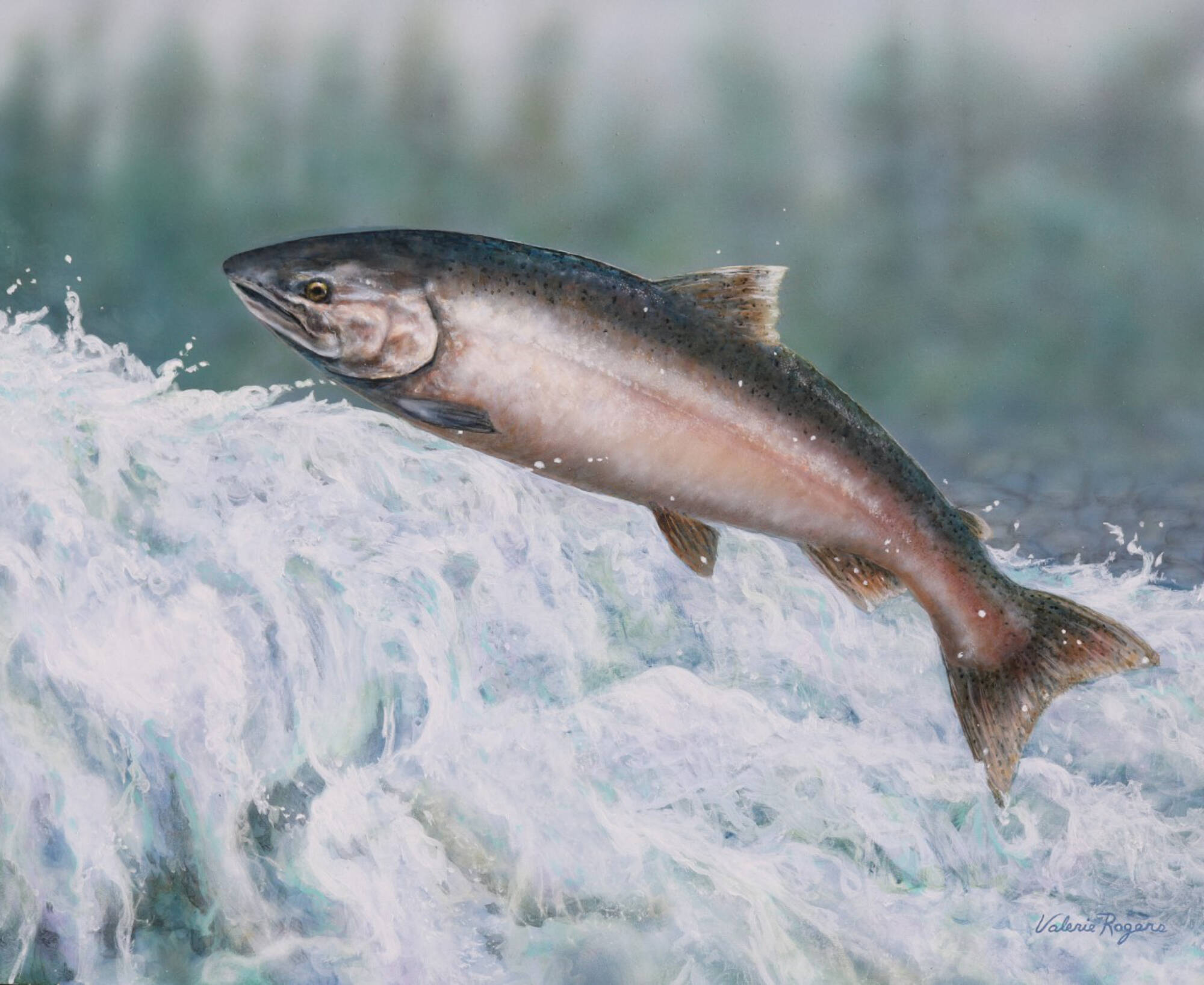A spawning chinook salmon has earned renowned Salmon Arm nature and wildlife artist Valerie Rogers a prestigious honour.
Her painting, Rapid Ascent, is the Pacific Salmon Foundation’s winner of its Salmon Conservation Stamp Art Competition for 2023-24.
“I was very excited as I have definitely tried before but this is the first one that’s made it,” she said enthusiastically following the win.
“There are some absolutely fantastic artists that submit to this. That’s why it’s such a pleasure to get, because we have some really wonderful underwater specialists in B.C. that paint only underwater, so it’s very exciting.”
Fisheries and Oceans Canada issues the Salmon Conservation Stamp, which is purchased and affixed to the licence of tidal water anglers who wish to retain any species of salmon. Those who want to keep chinook purchase the chinook stamp.
Fittingly for Rogers, all revenue from the sale of the stamps is returned to B.C. to fund salmon restoration and enhancement projects through the foundation’s Community Salmon Program.
Rogers explains she and her husband, who is an avid fisherman, are both passionate about fish and fisheries and water quality. She admits to falling in love with her subjects.
“For me the chinook are my favourite just because they have the real sheen – especially in their midlife coat, they are just a gorgeous fish… They are beautiful, full-bodied. They’re just a very powerful, impressive fish.”
She notes the chinook are missing the beautiful red of the spawning sockeye, and tend to go just a little red.
Read more: Robert Bateman, Valerie Rogers contribute to Shuswap outdoor school
Read more: Salmon Arm Art Gallery hosts exhibit focused on songbird decline
Rogers has been the BC Wildlife Federation’s Artist of the Year twice, and and once for the Guide Outfitters Association of British Columbia.
For the Pacific Salmon Foundation contest, the submissions were required to be anatomically correct but in the proper proportion to be reduced to a stamp. The foundation also recommended that paintings not be too dark or too detailed.
Rogers said although it seems it should be easy to paint the chinook with its nice tubular shape, the difficulty with a freeze frame – in this case the salmon leaping up the rapids – can be a petrified look.
To challenge herself, Rogers paints at least a couple of fish every year in order to make them more realistic, more believable.
Along with recognition from winning the contest, she will also get a monetary award. She thinks there will be a limited edition run of prints of the painting.
Asked about heroes, Rogers doesn’t hesitate. Robert Bateman is at the top of the list.
She said she’s been fortunate to meet him a number of times over the years.
“Now I’m really pleased I’m showing at the same places he is. We’re both members of the Artists for Conservation group in Vancouver that’s a worldwide organization…”
And there are other artists she follows with “great enthusiasm.”
Most of Rogers’ art is from those “wow moments” when she makes eye contact with an animal, she explains.
“I think, oh, I’ll go home and try to paint that. So I can have that same feeling as I look around the studio and can see all these wow moments that I’ve had.”
If you’d like to see Rogers’ art, her website is www.valerierogers.com. She is also on Facebook and Instagram under Valerie Rogers Paintings.
“Big art” is something she loves to do. Like a six-foot moose, for example.
“I love it when somebody wants something really impressive for their home.”
Variety is also part of the appeal. The day of the interview Rogers had been working on gladiolas and monarch butterflies. Earlier, a wolf.
“It’s ever-changing and that’s what’s fascinating about it. All the wonderful natural details you have to submerge yourself into, to make a piece of the art that brings the outside inside.”
Read more: Students try living rough in Salmon Arm through 24-hour experiment
martha.wickett@saobserver.net
Like us on Facebook and follow us on Twitter
and subscribe to our daily newsletter.

